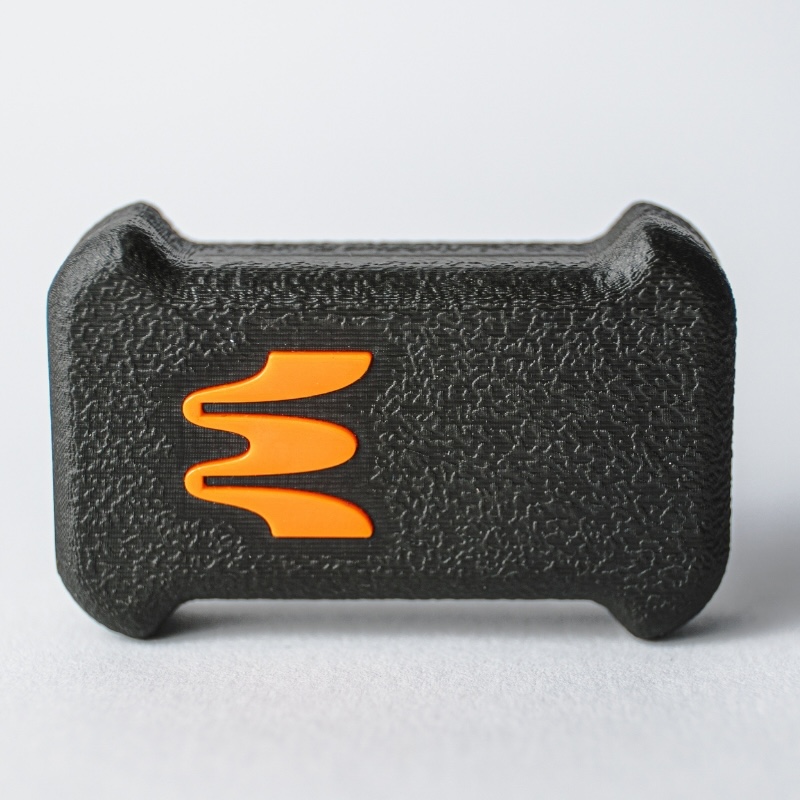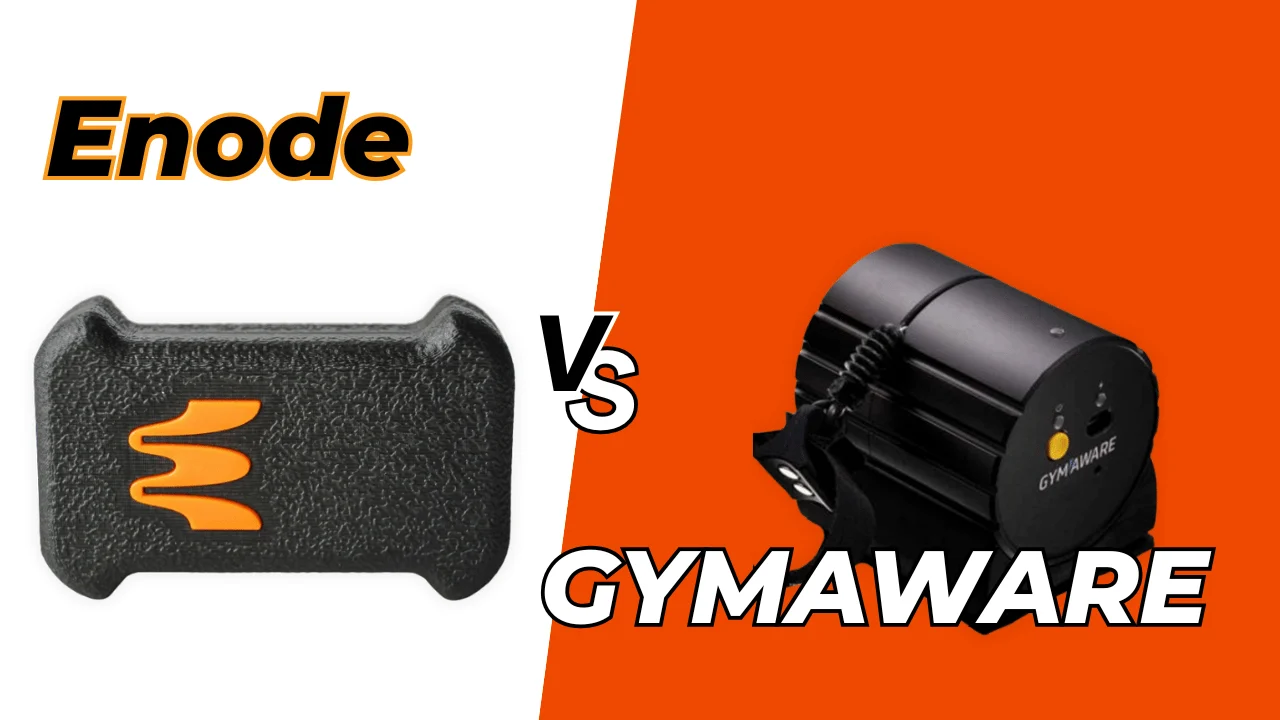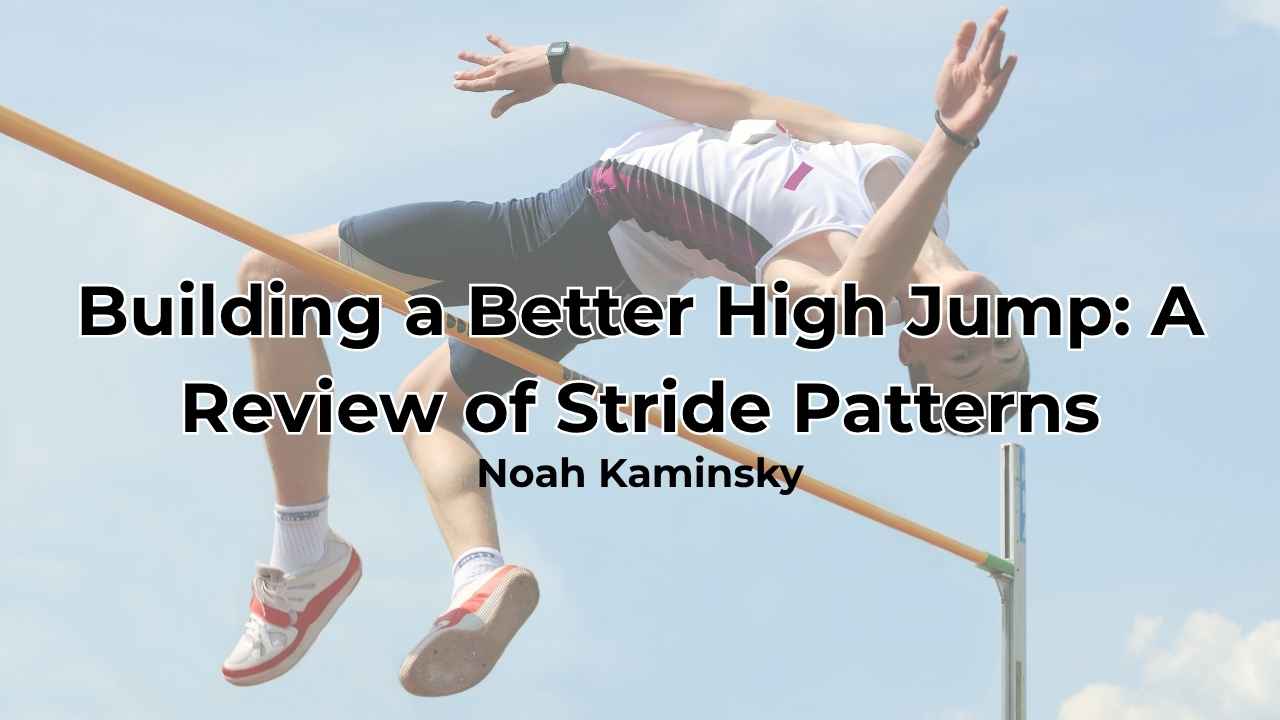There’s a good chance you’ve heard of velocity-based training (VBT)—but what’s all the hype about?
Coaches, trainers, athletes, and everyone else that’s remotely involved in athletic performance knows of VBT, but there are pros and cons about every training method…
Today, we’ll check out what the velocity-based training benefits are, what its disadvantages are, and shed some light on whether or not you should be using it too.
Let’s jump in!
What is Velocity-Based Training?
Velocity-based training uses the speed of movement (AKA the velocity) to regulate the intensity of exercises.
It measures how fast an athlete can move whatever load they’re lifting, and uses that measurement to make changes to the load.
This puts the athlete into an optimal intensity level for their training by accounting for fatigue levels and readiness to perform.
For VBT, you need specialized equipment like the Enode Pro, which is attached to a piece of training equipment (like a barbell) or placed facing the athlete to measure the velocity of each lift.

Why Do Velocity-Based Training?
The main reason you should consider velocity-based training is because it gives you accurate, detailed, and immediate feedback on your lifts.
Most training methods rely on estimated 1RMs and subjective assessments, which can lead to inconsistencies and not the greatest training loads—we’re not always perfect as humans!
VBT offers a more objective approach, giving us:
- Individualized Training: Each athlete can train in line with their specific needs and abilities instead of following a one-size-fits-all program.
- Real-Time Adjustments: Coaches (or athletes) can make instant changes to the current training program based on real-time data so that they’re always working at an optimal intensity.
- Enhanced Performance Monitoring: VBT gives you deep insights into your or your athlete’s progress, providing you with high-value tracking and adjustments over time.
What Are the Benefits of Velocity-Based Training?
There are less known benefits of velocity-based training, but let’s check out some of the big ones that you should be thinking about if you’re on the fence about it.
1. Precision & Accuracy
One of the biggest benefits of velocity-based training is its precision.
VBT allows for highly accurate adjustments to training loads by measuring the speed of exercise movement.
We’re beating the point into the ground here, but these detailed adjustments put your training into an optimal zone of intensity, reducing the risk of overtraining or undertraining.
2. Improved Performance
VBT benefits athletes by giving them the tools to train more effectively.
By focusing on velocity, athletes can develop explosive power and speed, which are important for basically all sports.
The development focus can be customized by putting the training load into a specific velocity zone, which works different systems of the athlete (e.g. improves strength, speed, and/or explosive strength).
VBT also helps in finding and addressing weaknesses, leading to overall performance improvements.
3. Recovery & Injury Prevention
Monitoring velocity can give you detailed insights into your or your athlete’s fatigue levels.
If you see a significant decrease in an athlete’s velocity, it might be a sign that they’re fatigued and need to rest.
This allows us to take a proactive approach, and helps avoid overtraining while reducing the risk of injuries.
4. Motivation & Engagement
VBT’s immediate feedback can be very motivating for athletes.
Seeing real-time data on their performance can drive them to push harder and stay engaged with their training program.
And, as we all know, a motivated athlete is a better athlete.
5. Customization & Flexibility
VBT allows for personalized training programs.
Coaches can create workouts to meet the specific needs and goals of each athlete, and make adjustments based on the immediate data we get with velocity-based training.
This level of customization ensures that each athlete is getting the most out of their training.
6. Data-Driven Decisions
With VBT, decisions are based on data rather than intuition.
And as coaches and athletes, data-driven training is what gives us an edge over not just our competition, but our training biases as well.
A scientific approach leads to more informed decisions, better training outcomes, and a more structured training process.
Coaches can use the data to identify trends, make predictions, and adjust training plans accordingly.
What Are the Disadvantages of Velocity Based Training?
As great as velocity-based training is, there are some disadvantages you should be aware of.
1. Cost of Equipment
One of the main disadvantages of velocity-based training is the cost of the specialized equipment required.
Devices can be expensive, making it a pretty big investment for some training facilities.
That said, we have amazing VBT devices at SimpliFaster that range from budget-friendly (like the Enode Pro) to elite (like the GymAware Powertool 8 unit kit).
2. Learning Curve
Properly implementing VBT into your training requires a certain level of expertise.
Coaches and trainers need to understand how to use the equipment and interpret the data correctly—this learning curve can be a barrier for some people, especially if you’re not familiar with technology-based training methods.
That said, there are great guides online that show you how to use these devices and methods.
3. Potential for Data Overload
While the data provided by VBT is valuable, it can also be overwhelming.
Coaches need to be able to sift through the information and focus on the most relevant metrics.
Without proper data management, you might risk getting bogged down by too much information.
Now, practice makes perfect, and most VBT devices use apps these days that make sifting through the data pretty easy.
4. Dependency on Technology
Another disadvantage of velocity-based training is the dependency on technology.
If the equipment fails or malfunctions, it can disrupt the training process.
Coaches and athletes need to have plans in place in case that happens—and you can always fall back on your own training principles!
Conclusion
Velocity-based training offers many benefits that can really improve athletic performance.
From precise training adjustments to data-driven progress to improved recovery and motivation, the benefits of velocity-based training are definitely something to consider.
Personally, I think the pros far outweigh the cons…
Improve Athletic Performance with SimpliFaster
At SimpliFaster, we’re dedicated to providing the best tools and resources to help coaches, trainers, and athletes achieve their goals.
Whether you want to try VBT or explore other training methodologies, we have a wide range of products and educational resources that will support you in your journey.
FAQs
Is velocity-based training worth it?
Velocity-based training is worth it for athletes and coaches who want precise adjustments to their training load and intensity. It’s also great if overtraining and fatigue are a concern.
What are the benefits of VBT?
The benefits of VBT include accurate load adjustments, improved performance tracking, raised athlete motivation, reduced risk of overtraining, better accommodation of daily fluctuations in strength and fatigue, and the ability to match training to specific velocity zones.
Why is intent important in velocity-based training?
Intent is important in VBT because it gets athletes executing their lifts with maximum effort and speed. High intent leads to more accurate velocity measurements.
What kind of technology does velocity-based training use?
VBT uses technology like linear position transducers, accelerometers, and velocity measurement devices to track the speed of lifts. These tools provide real-time data that helps adjust training loads and monitor performance.
What are examples of velocity-based training?
Examples of VBT include using a VBT device to measure the speed of a squat or bench press, and then adjusting the load based on the velocity zone for strength-speed or speed-strength. Other examples include tracking the velocity of Olympic lifts or plyometric exercises.
What is the main drawback of VBT?
The main drawback of VBT is the cost (and sometimes complexity) of the equipment needed to measure velocity accurately.
How to use velocity-based training?
Start by setting up a velocity measurement device on the exercise equipment (like a barbell if you’re squatting, for example). Perform a lift, and the device will measure the speed of the movement. Adjust the training load based on the velocity zone you want to target.
Since you’re here…
…we have a small favor to ask. More people are reading SimpliFaster than ever, and each week we bring you compelling content from coaches, sport scientists, and physiotherapists who are devoted to building better athletes. Please take a moment to share the articles on social media, engage the authors with questions and comments below, and link to articles when appropriate if you have a blog or participate on forums of related topics. — SF






